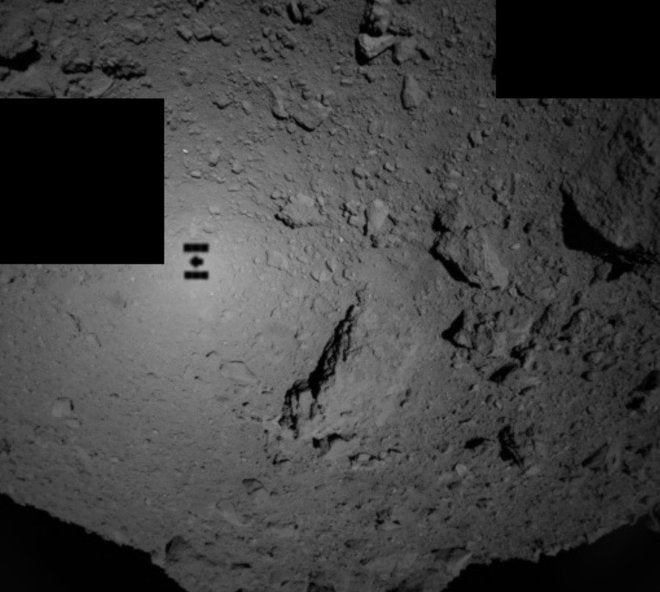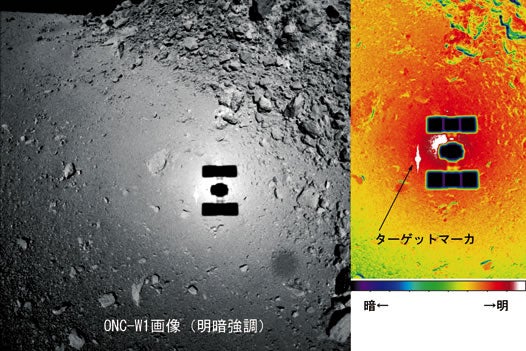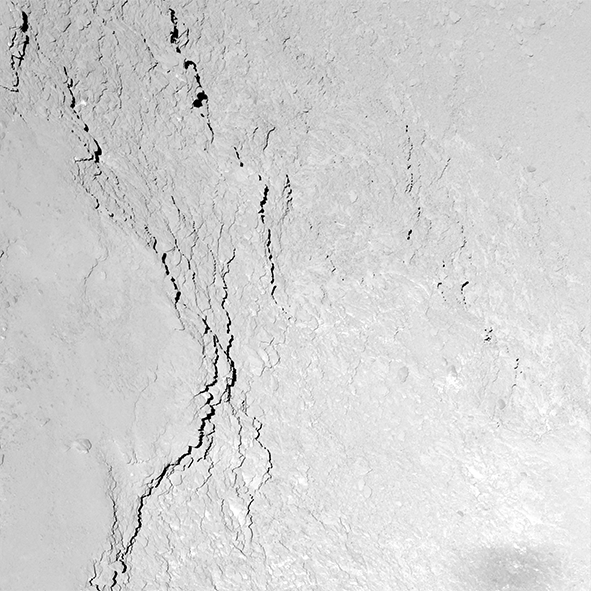This article was published in Scientific American’s former blog network and reflects the views of the author, not necessarily those of Scientific American
As the remarkable Hayabusa 2 mission to asteroid Ryugu forges ahead with its ambitious scientific explorations (including the dropping of a pair of hopping mini 'rovers' onto the surface) it's fun to pause and look at the times when we've managed to cast an observable shadow on worlds other than our own - especially from above the surface.
Hayabusa 2 is doing plenty of this, as the following recent image shows. Taken by the navigation cameras the distinctive outline of the spacecraft is clearly visible on the asteroid surface. Twin solar panels sandwiching the main spacecraft bus. The brighter glow around the shadow is due to the opposition effect (see below).

Hayabusa 2 shadow on Ryugu. Credit: JAXA
On supporting science journalism
If you're enjoying this article, consider supporting our award-winning journalism by subscribing. By purchasing a subscription you are helping to ensure the future of impactful stories about the discoveries and ideas shaping our world today.
For the first Hayabusa mission in 2005 the spacecraft shadow also provided an opportunity to see the opposition effect, literally the preferential scattering or reflection of light from the part of the asteroid in line with the spacecraft and the Sun. In this case light scattered back from the rubble-pile surface of asteroid Itokawa.

Hayabusa (1) over asteroid Itokawa. Credit: JAXA
Another shadow that was part of a groundbreaking mission was cast by the European Space Agency's Rosetta mission to a cometary nucleus. In this case we have a brief timelapse of the shadow scooting across the surface, somewhat blurred by motion.

The Rosetta spacecraft's shadow against the surface of Comet 67P/Churyumov-Gerasimenko. Credit: ESA, Rosetta, MPS for OSIRIS Team MPS, UPD, LAM,IAA, SSO, INTA, UPM, DASP and IDA
Of course, we've likely cast shadows in many other instances - from descents to the lunar or martian surfaces, to fleeting moments in passing or orbiting other worlds. But often those shadows will be blurred out by distance or too hard to spot in passing.
